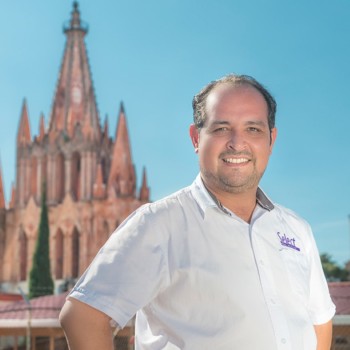Is San Miguel de Allende a good place to live?
Mi historia en San Miguel de Allende (3)
During the 17th and 18th centuries, San Miguel experienced its greatest boom, thanks to agriculture, livestock, local industry, and commerce. Its cultural wealth is represented in the architecture of civil and religious buildings and its colonial mansions. The families established in San Miguel el Grande during the colonial period, both Peninsular and indigenous, formed a mestizo society along with the migrant population throughout the silver route, enriching day by day a society rich in material and intellectual aspects.
At the end of the 18th century and the beginning of the 19th century, San Miguel el Grande played an important role in the independence movement, considered the Forge of National Independence. The 19th century brought a decline in its economy; however, the traditions and culture remained present in daily life. The Angela Peralta Theater, inaugurated by the singer Angela Peralta, known as the Mexican nightingale, brought renown to the cultural life of San Miguel de Allende, named after its eponymous hero General Ignacio Allende.
At the beginning of the 20th century, San Miguel de Allende still preserved traces of its splendor, highlighted by the neo-Gothic façade of La Parroquia de San Miguel Arcángel. Its traditions remained alive, both in the town and its communities, such as the Sanctuary of Jesus Nazarene in the community of Atotonilco, with its spiritual retreats and the annual pilgrimage of the Lord of the Column during Holy Week; the celebration of Corpus Christi in June, or the feast of San Isidro Labrador and San Pascual Bailon with their gardeners, among others. However, its greatness was in decline, the ancestral home of the De La Canal family was abandoned, as were other buildings. The railway station still connected San Miguel de Allende with the rest of the country, the mule tram made its journey from the civic plaza to the railway station, carrying passengers and goods to and from the city. One afternoon, while making this journey, a character arrived who fell in love with the small town lost in the mountains, Mr. Stirling Dickinson.
*****
Durante los siglos XVII y XVIII San Miguel tuvo su mayor auge, gracias a la agricultura, ganadería, industria local y el comercio, su riqueza cultural se ve representada en la arquitectura de los edificios civiles, religiosos y sus casonas virreinales. Las familias establecidas en San Miguel el Grande durante el virreinato, tanto las peninsulares como las indígenas, conformaron el mestizaje junto a la población migrante a todo lo largo de la ruta de la plata, enriqueciendo dia a dia una sociedad rica en lo material y lo intelectual.
A finales del siglo XVIII y principios del siglo XIX, San Miguel el Grande formó parte importante en el movimiento independentista, considerada como la Fragua de la Independencia Nacional. El siglo XIX trajo una decadencia en su economía, sin embargo la parte de las tradiciones y cultura seguía presente cotidianamente, el Teatro Angela Peralta inaugurado por la misma cantante Angela Peralta, el ruiseñor mexicano, dio renombre a la vida cultural de San Miguel de Allende, nombrado por su héroe epónimo General Ignacio Allende.
Al inicio del Siglo XX San Miguel de Allende conservaba todavía muestras de su esplendor, destacando la fachada neogótica de La Parroquia de San Miguel Arcángel, y sus tradiciones seguían vivas, tanto en el pueblo y sus comunidades, como en el Santuario de Jesús Nazareno en la comunidad de Atotonilco, con sus retiros espirituales y su peregrinacion del Señor de la Columna cada año durante la Semana Santa; la celebración del Corpus Christi en el mes de junio o la fiesta de San Isidro Labrador y San Pascual Bailon con sus hortelanos etc. pero su grandeza estaba en decadencia, la casa solariega de la familia De La Canal estaba en abandono, al igual que otros edificios. La estación del ferrocarril seguía conectando a San Miguel de Allende con el resto del país, el tranvía de mulitas hacia su recorrido de la plaza cívica rumbo a la estación del ferrocarril llevando y trayendo pasajeros y mercancías a la ciudad… Una tarde haciendo este trayecto llega un personaje que se enamoró del pequeño pueblo perdido en las montañas, el Sr Stirling Dickinson.






